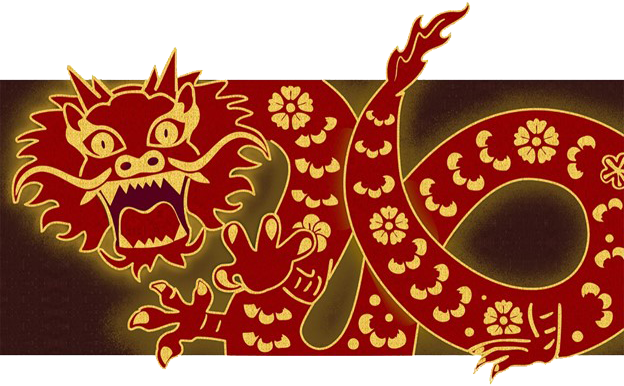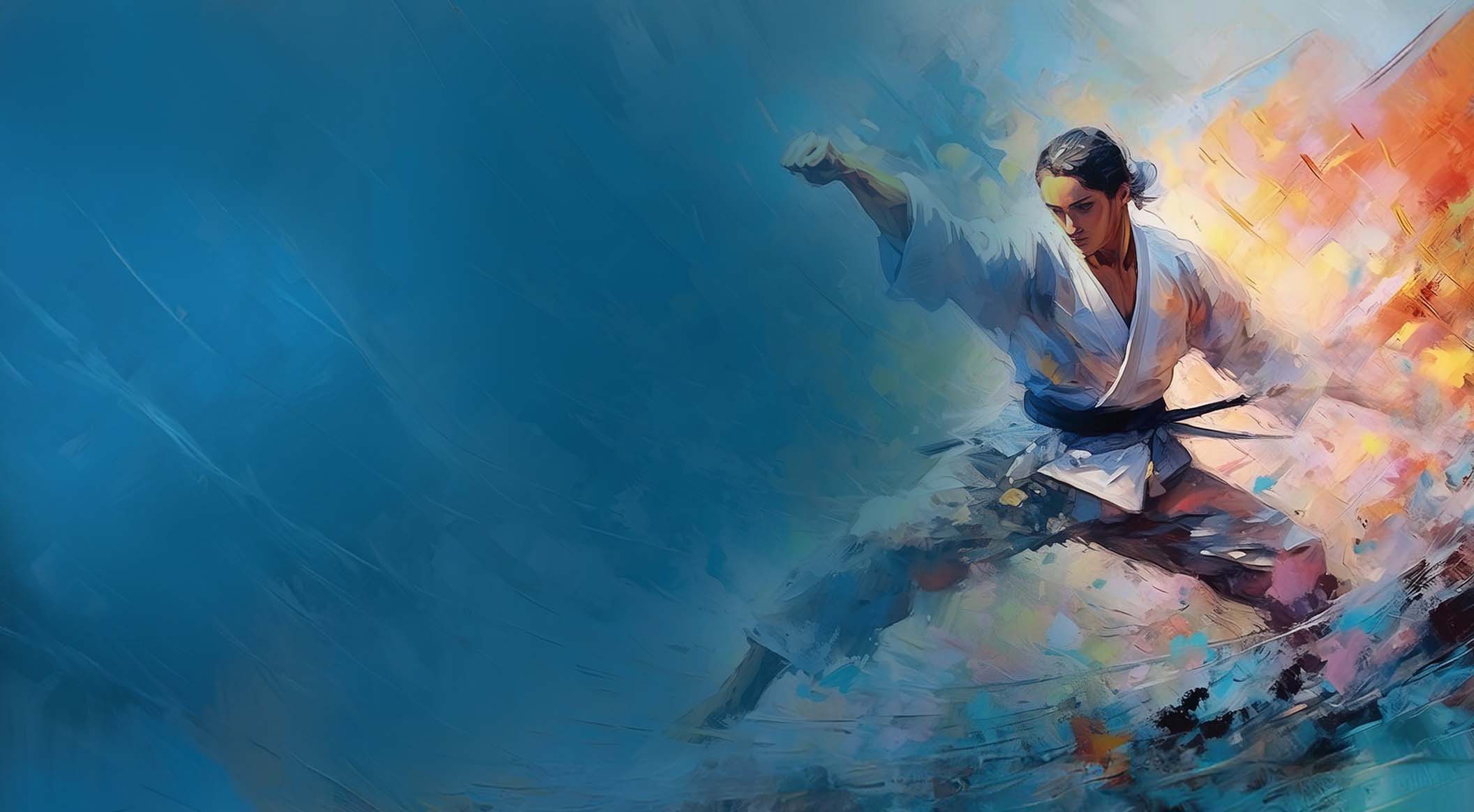When All Else Fails
By Christopher Caile
Editor's Note: Some of the techniques described below are brutal and life threatening and should not be used, ever, unless your life is in imminent danger. I do not recommend the use of these techniques, but catalogue them here for educational purposes. Do not practice them unless under the supervision of a qualified senior instructor and after consultation with your medical doctor or health provider.
Are there any karate techniques that you can absolutely depend upon if all else fails – techniques that can work against bigger, stronger attackers or against those seemingly impervious to pain or who exhibit almost superhuman strength as a result of being high on drugs?
The answer is no. That's the bad news. But the good news is that there are a couple of techniques and strategies that come close, that are effective virtually against anyone at any time – if you can execute them, and that's the big "if." That's the qualifier.
Of course, my best advice is to avoid the conflict and not get yourself in this type of situation in the first place – easy to say, but as is often the case, people just don't keep their mental guard up. The result is they can find themselves in compromising situations, and here I am not talking about pleasant interludes with the opposite sex.
If you should find yourself face to face with a drug induced opponent who wouldn't think twice of becoming your human compactor, my best advice is to say "adios" and get out of there – fast, very fast. Even a trained law enforcement officer, or sometimes a group of them, has trouble controlling these guys.
I am sometimes amused at what is taught as "self-defense." People teach unsuspecting students that if attacked this way, if they just move like this or hit here they will be in control and defeat the attacker. Nothing could be further from the truth.
Attackers, even those not on drugs, are determined. Often your defenses will work, but not always. Some will just won't "buckle" if hit in a certain spot. Either they have a high pain tolerance or they have learned to shrug off strikes (they have been there before, been in fights and aren't surprised by a counter attack). Others can be mentally deranged, are drunk or worse – high on meth amphetamines or crystal meth (much worse). The latter exhibit an unhappy combination – illogical thought processes, almost super-human strength and no feeling of pain.
In short, any attacker can be big trouble. Opponents are at best uncooperative, and at worst not responding to your self-defense techniques. After an initial attack (if survived) things can degenerate into an unpredictable physical confrontation.
What would I use? Several things. Interestingly, these are the same things I see again and again within the techniques and tactics of karate kata (but this is a whole other subject).
First, no matter how strong or deranged a person is, he still depends upon his balance to move. If a person is off-balance he has no strength. I remember reading an article on the Guardian Angels many years ago. The crux of the article was that training had at one time focused on teaching pressure point techniques, but was later modified. It was found much more effective to spin problem makers or attackers – since once off balance, any attacker must first regain balance in order to attempt to fight or resist.
A couple of years ago a former police officer submitted an article to me at FightingArts.com about his confrontation with a much bigger, stronger and determined patron of a bar who he had been called in to control. Having tried to control this person with his night stick and then a low kick to the knee to no avail, he was able to subdue the opponent with combination technique. First he intercepted a hook punch (blocked) which was then pushed past him, spinning the opponent (his left forearm catching a right haymaker but then moving above the arm to pull it past him), and then from the side he initiated a vascular choke (pressure on the sides of the neck to cut off the blood supply to the brain) which brought the goliath to the floor in about 7-10 seconds.
Thus two techniques which are almost always workable (which I think are the most dependable) are off-balancing (or spinning) and the vascular choke. Both require, however, skill of execution. Off balancing can be leading or a head manipulation (the old saying, "where the head goes, the body follows") as in aikido, a throw or sweep as in judo, or even throwing and rolling the body across the feet of a charging attacker (a former semi-pro football player in my karate class in Peoria, Illinois used to use this with great effectiveness, but we had to discourage this tactic since this move if executed with speed and full body weight can easily injure either the knees or ankles of surprised victims). This type of takedown is also temporary, however. If not injured the attacker can get up and continue his attack.
The vascular choke too has limitations. It takes knowledge to apply it adequately and it also takes strength to execute it well. Another type of choke, one across the windpipe will also work, but it is dangerous (it can crush the windpipe and cause internal swelling. This can kill someone, and this is one reason most police departments have banned chokes all together) and takes up to a minute to be effective –awfully long if someone is struggling against you.
If you are fighting for your life the wind pipe can still be a target, however. A hard blow with a forearm or elbow with your whole weight behind it can cause severe damage, but this still takes a little while to take effect. It will work on anyone since the wind pipe has no protection. It will stop virtually anyone, although sometimes not immediately) and you might have to justify your actions to the local district attorney.
Another effective technique is eye attack, but personally I try to avoid attacks that can cause permanent injury. If ever used, I would probably limit any attack to what the Chinese often refer to as "Splashing Hands," an open back of the hand whip of the finger tips into the face (this is not to be practiced since it is very dangerous).
Most people will respond to a hit in the eye. A few years ago in a martial arts camp I witnessed a few students during a break playing with soft round flexible foam sticks about three foot long and four inches thick. They were using them to practice against club and sword attacks, or two man duels. Quickly, however, practice degenerated into wild swings. Suddenly one participant yelled, brought both hands to his eyes, fell to the ground, balled into a fetal position and rolled around in obvious pain. He had been struck in the eye by a corner of the foam practice weapon. Very luckily there was no pertinent damage, but the next day his eye was almost swollen shut and he was out of practice.
Eye technique, however, have limitations too. If the attacker is on drugs and doesn't feel pain, there will be an automatic blink reflex, but the pain response will be missing or greatly decreased.. The attack might be momentarily interrupted, but possibly not stopped. To stop the drug induced attacker with an eye technique, the fingers have to be driven into the eyes hard enough to cause damage – not for the feint of heart, but effective on a battlefield. This is one technique I would myself try to avoid.
Another strategy is the good old concussion. A good strike to the chin, for example, can shock and spin the head with sufficient velocity to send the brain crashing into the hard surface of the far side of the inner skull. Even if pain in not felt, the effect can still create a knockout.
Another tactic is break the structural integrity or support system of the body, such as to tear the knee or elbow joint to make it unworkable – but this is often difficult at best (although the elbow is easier if first set up with a concussion).
I would instead go after another bone that can render an arm non-workable – an elbow technique driven into or down onto the middle of the collar bone (clavicle) can often cause a break, the break limiting movement of the arm. But this takes quite a lot of power, and if you are moving and grappling, it is hard to do.
Other structurally weak points include the long bones across the top of the wrist (connecting to and supporting the knuckles) and their equivalent along the top of the foot (metacarpal bones). Since hands move quickly, here my choice falls to the feet – a good stamp to the top of the foot with my heel with full body weight combined with a turning motion to separate these long bones. Nasty, but also sometimes difficult depending on what your opponent is wearing on his feet. If the person feels pain, the confrontation might just end there. If not, you just might have made the attacker really, really mad.
The last techniques are what Bruce Miller (whose pressure points are sold on FightingArts.com) calls "Launch Points" – points that are effective even when an attacker is drugged up or has little response to what most people would find to be painful. A finger driven directly up into the nostril will cause anyone to jump back. Likewise a finger driven in and down into the "V" at the bottom of the neck (in the notch in middle of the front just above where the two clavicle bones meet) the will cause an automatic gag reflex and the opponent will likewise jump back.. These techniques, however, require knowledge (where and how to apply) plus adequate speed and power to execute. They work best if someone grabbed you and is stable to your front. If you are moving around, trading techniques or grappling these techniques are probably not for you.
In short, there are no magic techniques – all have limitations. But you aren't without alternatives. Some of these techniques might just provide momentary advantage, and might allow you to survive. Hopefully you will never have to test them.

About the Author Christopher Caile

Screenshot
Christopher Caile is the Founder and Editor-In-Chief of FightingArts.com. He has been a student of the martial arts for over 65 years.
He first started in judo while in college. Then he added karate as a student of Phil Koeppel in 1959 studying Kempo and Wado-Ryu karate. He later added Shotokan Karate where he was promoted to brown belt and taught beginner classes. In 1960 while living in Finland, Caile introduced karate to that country and placed fourth in that nation's first national judo tournament.
Wanting to further his karate studies, Caile then hitch hiked from Finland to Japan traveling through Scandinavia, Europe, North Africa, the Middle East and South and Southeast Asia — living on 25 cents a day and often sleeping outside.
Arriving in Japan (1962), Caile was introduced to Mas Oyama and his fledgling full contact Kyokushinkai Karate by Donn Draeger, the famous martial artist and historian. Donn also housed him with several other senior international judo practitioners. Donn became Caile's martial arts mentor, coaching him in judo and introducing him to Shinto Muso-ryu under Takaji Shimizu.
Caile studied at Oyama's honbu dojo and also at Kenji Kurosaki's second Tokyo Kyokushinkai dojo. In his first day in class Oyama asked Caile to teach English to his chief instructor, Tadashi Nakamura. They have been friends ever since. Caile also participated in Oyama's masterwork book, "This Is Karate."
Caile left Japan with his black belt and designation as Branch Chief, the first in the US to have had extensive training in Japan directly under Oyama Sensei. As such, Oyama Sensei asked him to be his representative on visits to his US dojos to report on their status.
A little over a year later, Nakamura, Kusosaki and Akio Fujihira won an epic David vs. Goliath challenge match against Thailand's professional Muay Thai Boxers in Bangkok, Thailand, thrusting Kyolushinkai and Nakamura into national prominence.
Back in the US Caile taught Kyokushinkai karate in Peoria, Il while in college and later in Washington, DC. while in graduate school. Durimg this time Shihan Nakamura had moved to New York City to head Kyokushinkai's North American Operation.
In 1976 when Kaicho Tadashi Nakamura formed the World Seido Karate organization, Caile followed. Living then in Buffalo, NY, Caile taught Seido karate and self-defense at the State University of New York at Buffalo (SUNY Buffalo) for over 15 years where he also frequently lectured on martial arts and Zen in courses on Japanese culture.
Caile moved to New York City in 1999 to marry Jackie Veit. He is now an 8th degree black belt, Hanshi, training in Seido Karate's Westchester, NY Johshin Honzan (Spiritual Center) dojo. In Seido Caile is known for his teaching of and seminars on kata applications. He also produced a 14 segment video series on Pinan kata Bunkai currently available to Seido members.
Caile is also a long-time student and Shihan in Aikido. He studied in Buffalo, under Mike Hawley Shihan, and then under Wadokai Aikido's founder, the late Roy Suenaka (uchi deshi under Morihei Ueshiba, founder of Aikido and was Shihan under Tohei Sensei). In karate, Suenaka (8thdan) was also an in-house student of the Okinawan karate master Hohan Soken.
Having moved to New York City, Caile in 2000 founded this martial arts educational website, FightingArts.com. Twenty-five years later, in 2025, it underwent a major update and revision.
For FightingArts.com and other publications Caile wrote hundreds of articles on karate, martial arts, Japanese art, Chinese Medicine and edited a book on Zen. He also developed relationships with a cross section of leading martial arts teachers. Over the last four decades he has conducted extensive private research into karate and martial arts including private translations of the once secret Okinawan hand copied and passed on Kung Fu book, the Bubishi, as well as an early karate book by the karate master Kenwa Mabuni. He periodically returns to Japan and Okinawa to continue his studies and participate Seido karate events. In Tokyo he practiced (with Roy Suenaka Sensei) in a variety of aikido organizations with their founders – including private interviews and practices at the Aiki-kai Aikido Honbu dojo with the son and grandson of aikido's founder, Doshu (headmaster) Kisshomaru (an old uchi-deshi friend) and his son, Moriteru Ueshiba and in Iwama with Morihiro Saito. On Okinawa he studied Goju Ryu karate under Eiichi Miyazato, 10th dan founder of Naha's Jundokan, and also with Yoshitaka Taira (who later formed his own organization, who specialized in kata Bunkai. While there Caile also trained with Hohan Soken's senior student, Master Fusei Kise, 10 dan as well as with the grandson of the legendary karate master Anko Itosu.
Caile's other martial arts experience includes: Diato-ryu Aikijujitsu and Kenjitsu, kobudo, boxing, Muay Thai, MMA, Kali (empty hand, knife and bolo), study of old Okinawan Shoran-ryu & Tomari body mechanics, study of old Okinawan kata under Richard Kim, study of close quarter defense and combat, including knife and gun defenses, Kyusho Jitsu and several Chinese fighting arts including 8 Star Praying Mantis, Pak Mei (White Eyebrow), and a private family system of Kung Fu.
Caile is also a student of Zen as well as a long-term student of one branch of Traditional Chinese Medicine, Chi Kung (Qigong). As one of two senior disciples of Chi Kung master Dr. Shen (M.D., Ph.D.) Caile was certified to teach and practice. This led to Caile's founding of the The Chi Kung Healing Institute on Grand Island, NY. In Western NY, he also frequently held Chi Kung seminars, including at SUNY Buffalo and at the famous Chautauqua Institution in Chautauqua, NY. His articles on Chi Kung also appeared in the Holistic Health Journal and in several books on alternative medicine.
Caile holds a BA in International Studies from Bradley University and MA in International Relations with a specialty in South and Southeast Asia from American University in Washington, D.C. While in Buffalo, NY he also studied digital and analog electronics.
In his professional life Caile also worked in public relations and as a newspaper reporter and photographer. Earlier he worked in the field of telecommunications including Managing a Buffalo, NY sales and service branch for ITT. He then founded his own private telephone company. This was followed by creation of an electrical engineering company that designed and patented his concept for a new type of low-cost small business telephone system (which was eventually sold to Bell South). The company also did contract work for Kodak and the US space program. Simultaneously Caile designed and manufactured a unique break-apart portable pontoon boat.
Most recently Caile co-founded an internet software company. Its products include software suites with AI capability for control and management of streaming media, such as video and music, an all-in-one book publishing software product for hardcover, eBook and audio book creation and security software for buildings and government use.
For more details about Christopher Caile's martial arts, work experience and life profile, see the About section in the footer of this site.
Search for more articles by this author:






